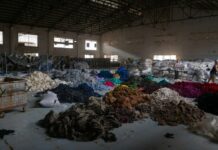The Cost of Silence on the Mill Floor
Every moment a card, loom, or dye jet stands idle results in more than just lost minutes; it triggers a domino effect that impacts batch planning, delivery timelines, and cash flow. Industry analysts estimate that unplanned machine downtime in textiles can account for approximately three to five percent of annual turnover, equating to over $20 billion in global losses. While traditional preventive maintenance methods—such as fixed-interval services and manual inspections—have alleviated some issues, they have never fully eradicated them. Enter Industry 4.0, offering a more precise solution: permanent sensor networks that can detect potential failures before they occur and schedule maintenance to minimize disruptions.
From Calendar-Based to Condition-Based
Predictive maintenance in textile manufacturing combines industrial IoT devices—monitoring vibrations, temperature, ultrasound, and power consumption—with cloud or edge analytics to learn the normal operating patterns of each machine. Once a baseline is established, statistical anomalies can trigger alerts long before a failure occurs. Research indicates that such systems can reduce unplanned downtime by up to 65% and maintenance costs by as much as 40% when fully implemented. In a sector where a single rotor frame can produce seven tonnes of yarn daily, these percentages are crucial.
Market Traction Backed by Hard Numbers
Since 2022, the adoption of predictive maintenance technologies has surged. Recent surveys reveal that nearly 70% of textile mills have incorporated IoT condition monitoring into at least one production area, with over half planning to expand this approach plant-wide by 2027. Investment in predictive maintenance technologies has exceeded $1 billion globally in the past year, growing nearly 30% annually.
Jaya Shree Textiles: 42,000 Spindles, 19% Reliability Gain
India’s Jaya Shree Textiles, the largest integrated linen producer globally, connected more than 58 critical assets—including spindles, hackling machines, and blowers—to a predictive maintenance platform in early 2024. Within nine months, the mill achieved a 19% improvement in mean time between failures and nearly halved the time spent on manual vibration monitoring. This system prevented at least six critical gearbox failures, allowing the mill to recover its investment within a year.
Rieter’s ESSENTIALmaintain: OEM Support at Scale
Rieter, a prominent OEM for short-staple spinning systems, now ships its machines equipped with embedded sensors linked to the ESSENTIALmaintain module. This platform analyzes real-time data from bearings and drives, generating early-warning alerts and recommended actions. Trials in three European ring-spinning mills showed a 30% decrease in emergency stoppages and a reduction in scheduled downtime after training algorithms on local conditions.
Shandong Ruyi: 30% Less Downtime in Denim
In China, Shandong Ruyi Technology Group deployed AI edge devices throughout its weaving facilities to monitor loom vibrations and shedding motion. The company reported over 30% less unplanned downtime and a measurable reduction in fabric waste, securing new contracts with North American fashion retailers that require traceable uptime data.
Digital Twins in West Java SMEs
The integration of IoT-based predictive maintenance with digital twin simulations has proven even more effective. A 2025 study of 120 textile SMEs in West Java revealed that combining live monitoring with simulation modeling improved overall equipment effectiveness by up to 45%, giving smaller manufacturers a competitive edge over larger firms.
Implementation Realities Inside the Mill
Implementing predictive maintenance in textile manufacturing is more about establishing data discipline than simply purchasing hardware. Successful programs typically begin on a small scale—often with a single production line—and gradually develop a comprehensive data environment. Integration with the existing Computerized Maintenance Management System (CMMS) ensures that predictive alerts can be converted into actionable work orders. Older mills with outdated PLC systems have turned to retrofit gateways, which are more affordable than full electrical upgrades. Training is also vital; at Pan Brothers in Indonesia, over 140 maintenance staff were retrained to interpret sensor dashboards, leading to quicker root-cause analysis and more empowered frontline teams.
Sustainability in the Maintenance Equation
Predictive maintenance is increasingly recognized as an ESG driver. Research shows that every 1% reduction in textile machine scrap can lower a mill’s carbon footprint by more than 1%, due to diminished energy, water, and reprocessing needs. For instance, Welspun India links its decarbonization targets to real-time asset health data, noting significant reductions in steam usage and compressed-air losses. Utilizing sensor data for dynamic load balancing has also yielded double-digit energy savings in numerous spinning mills.
Financing the Shift
While initial capital expenditures for full-factory sensor deployments can be substantial—ranging from $150,000 to $500,000—vendors are now offering subscription models that lower upfront costs. These as-a-service plans allow mills to pay per monitored meter or asset, often with guarantees for performance improvement. Financial institutions are beginning to reward mills implementing predictive systems, as they help reduce operational risks and extend asset lifespans.
The Next Stage: Edge Analytics, 5G, and Self-Healing Systems
As sensors advance and decrease in cost, intelligence is shifting from the cloud to the edge. Some predictive models now operate directly on microcontrollers embedded in machines, reducing latency and enhancing fault prediction accuracy. With 5G infrastructure expanding in industrial areas, even high-speed looms and dyeing lines can transmit real-time diagnostics seamlessly. Some factories are piloting “self-healing” systems that automatically adjust to temperature or vibration anomalies, preventing full breakdowns and maintaining production flow.
Conclusion
Predictive maintenance powered by IoT has moved beyond the pilot phase—it’s becoming essential to modern textile manufacturing. Evidence from operations at Jaya Shree, Rieter-equipped mills, and Shandong Ruyi clearly shows gains in uptime, yield, and energy efficiency. Just as automation transformed the mechanical aspects of textile production, predictive systems are now redefining machine maintenance. In a landscape characterized by shrinking margins, regulatory scrutiny, and increasing ESG demands, this level of operational insight is no longer just a competitive advantage—it is a necessity. Mills that act promptly will lead the way in reliability, responsiveness, and resilience over the next decade. Predictive maintenance in textile manufacturing is the future, and those who embrace it will thrive.



































